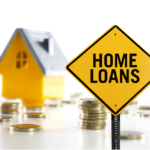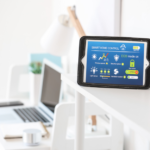Tips on How to Build Environmentally Friendly Homes
Here are some tips on how to incorporate sustainable and green building practices into your custom home:
1. Energy Efficiency
Insulation and Sealing: Use high-quality insulation materials to reduce heating and cooling needs. Seal all gaps, including windows and doors, to prevent air leakage and ensure energy efficiency.
Energy-Efficient Appliances: Install Energy Star-rated appliances to reduce energy consumption. Consider using LED lighting, which uses less energy and has a longer lifespan than traditional bulbs.
Renewable Energy Sources: Integrate solar panels to harness renewable energy and reduce reliance on non-renewable sources. Explore geothermal heating and cooling systems, which use the earth’s stable temperature to regulate your home’s climate efficiently.
2. Water Conservation
Low-Flow Fixtures: Install low-flow toilets, showerheads, and faucets to reduce water usage without sacrificing performance.
Rainwater Harvesting: Implement a rainwater harvesting system to collect and use rainwater for irrigation and other non-potable uses.
Efficient Irrigation: Use drip irrigation systems for landscaping to minimize water wastage. Choose drought-tolerant plants that require less water.
3. Sustainable Materials
Recycled and Reclaimed Materials: Use recycled steel, reclaimed wood, and other materials to reduce the environmental impact of new production. Opt for materials with a high percentage of recycled content.
Locally Sourced Materials: Sourcing materials locally reduces transportation emissions and supports the local economy.
Sustainable Wood: Use wood certified by the Forest Stewardship Council (FSC) to ensure it comes from responsibly managed forests.
4. Indoor Air Quality
Low-VOC Products: Choose paints, finishes, and adhesives with low volatile organic compound (VOC) levels to reduce harmful emissions.
Proper Ventilation: Install energy recovery ventilators (ERVs) or heat recovery ventilators (HRVs) to improve indoor air quality by providing fresh air while retaining energy used for heating and cooling.
Natural Lighting: Design your home to maximize natural light, reducing the need for artificial lighting and improving indoor air quality through ventilation.
5. Smart Home Technology
Automated Systems: Use smart thermostats to optimize energy use based on your schedule and preferences. Implement smart irrigation systems that adjust watering schedules based on weather conditions and soil moisture levels.
Energy Monitoring: Install energy monitoring systems to track and optimize your energy consumption.
6. Sustainable Landscaping
Native Plants: Choose native plants that are adapted to your local climate and require less water and maintenance.
Permeable Paving: Use permeable paving materials for driveways and walkways to reduce runoff and promote groundwater recharge.
Health and Well-Being
Improved indoor air quality and natural lighting create a healthier living environment. Using non-toxic materials and ensuring proper ventilation can reduce the risk of respiratory issues and other health problems.
By incorporating these sustainable and green building practices, you can create a home that is not only environmentally friendly but also cost-effective and healthy. Embracing these practices is a step towards a sustainable future and ensures your home stands the test of time while respecting the planet.
For more information and detailed guides, you can visit resources such as the U.S. Green Building Council (USGBC) and the Energy Star website.




